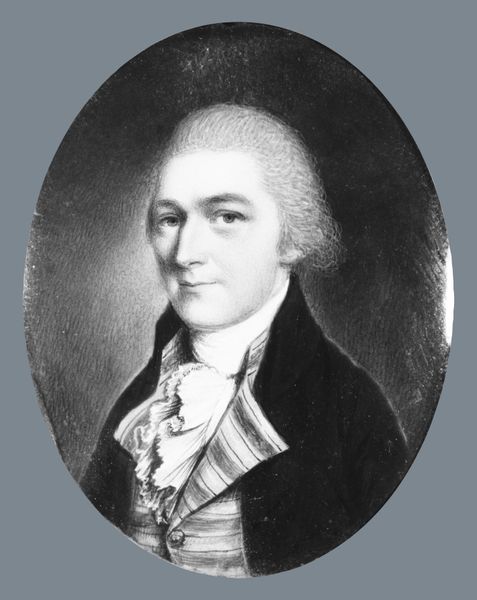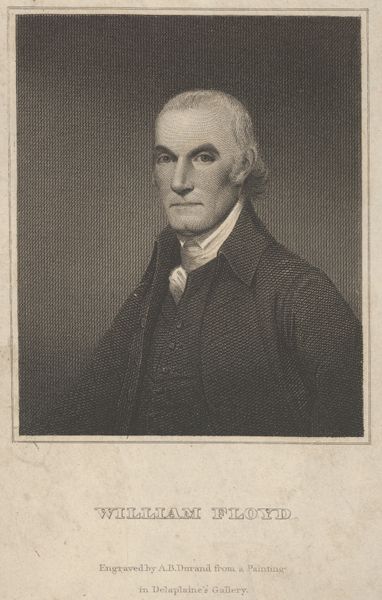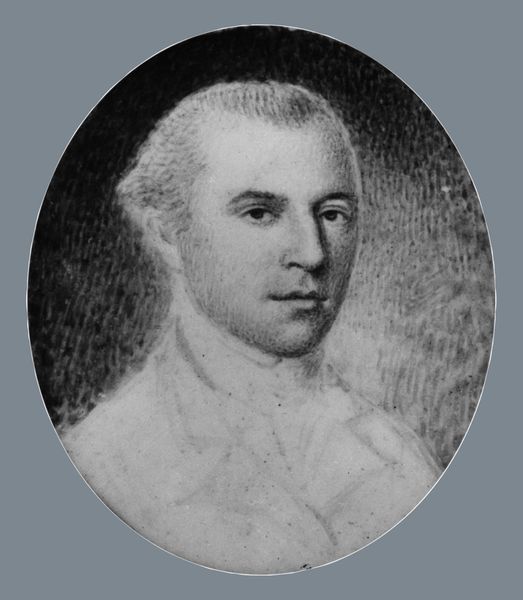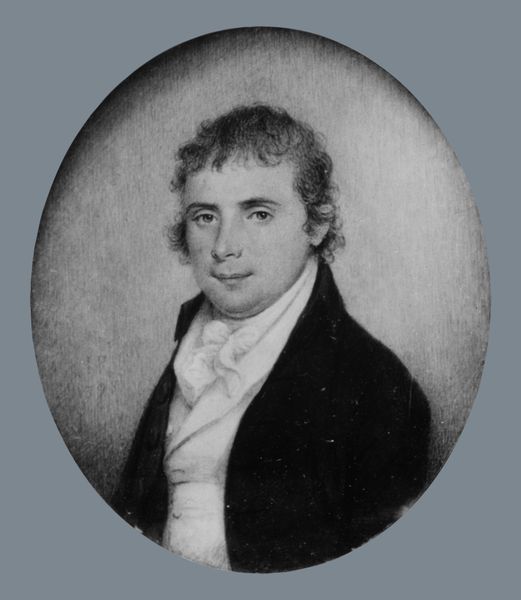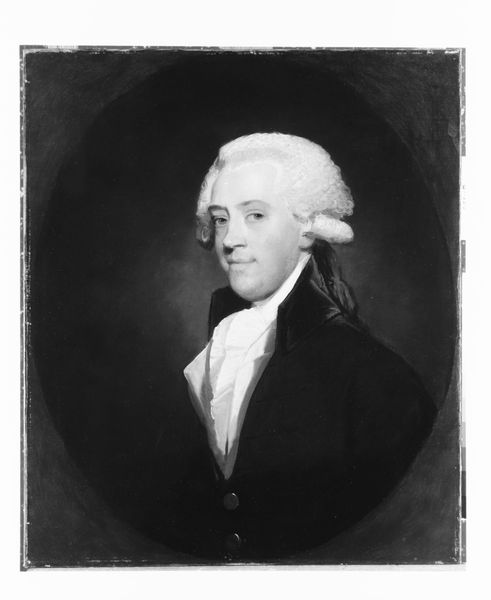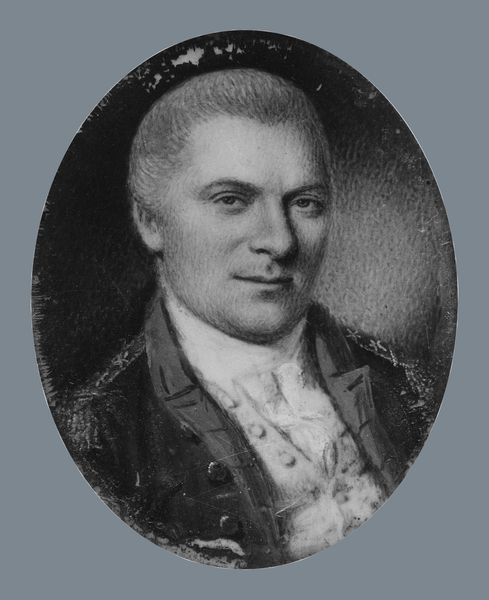
painting
#
portrait
#
neoclacissism
#
portrait
#
painting
#
romanticism
#
academic-art
Dimensions: 2 15/16 x 2 5/16 in. (7.5 x 5.9 cm)
Copyright: Public Domain
Curator: Before us, we have "James G. Almy," a portrait created between 1795 and 1798 by Edward Greene Malbone. It's currently housed here at the Metropolitan Museum of Art. Editor: The piece definitely exudes a quiet elegance, almost somber. There’s a striking contrast in tones, emphasizing Almy's features. The oval format is intimate, drawing you closer to his likeness. Curator: Malbone was quite prolific, highly regarded for his miniatures, though he worked in larger formats, too. It's interesting to consider the specific labor and materials involved: the delicate brushstrokes, the support he used, how that influences our experience now. What survives in this condition speaks to deliberate craftsmanship. Editor: Absolutely. This portrait really speaks to a burgeoning American identity in the late 18th century, one where the wealthy merchant class, represented here by Almy, is establishing itself, visually marking their place in society through commissioned art. Look closely at his attire. That austere, dark coat and tightly wound cravat convey so much. What do you make of the way it reinforces a social hierarchy? Curator: The subdued palette further highlights a shift away from overt displays of wealth. One can argue it's a reflection of mercantile ideals: industriousness, reliability... Perhaps it hints at Almy's societal role? Editor: And the way he's looking slightly off to the side could also convey subtle disquiet amidst the certainty of new money. There’s something melancholic there, despite the trappings of status. How did he perceive his rapidly changing world? What compromises were made as he became a prominent player in it? These are key issues to investigate through portraits such as this. Curator: This prompts us to consider not just what the artist wanted to represent but also what the sitter sought to project about themselves. Editor: Examining "James G. Almy" pushes us to critically look at identity, class, and the formation of social and historical narratives in early America. Curator: Indeed. Appreciating its materiality provides access into those more significant and contextualized realms.
Comments
No comments
Be the first to comment and join the conversation on the ultimate creative platform.


